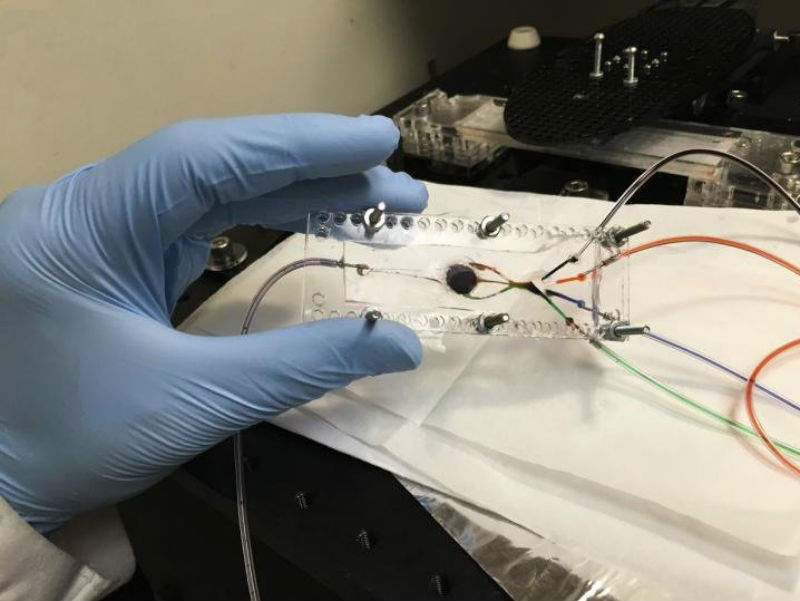
A bioengineer at the University of California, Los Angeles (UCLA) has developed an adapted 3D printing technique capable of building complex biological tissues from multiple materials. The process could eventually be used to print artificial tissues for use in transplants and other surgeries.
UCLA professor and creator of the technique Ali Khademhosseini said: “Tissues are wonderfully complex structures, so to engineer artificial versions of them that function properly, we have to recreate their complexity. Our new approach offers a way to build complex biocompatible structures made from different materials.”
The technique uses stereolithography, a light-based form of 3D printing technology. Khademhosseini’s customised 3D printer has two key components. The first is a custom-built microfluidic chip with multiple inlets that can each ‘print’ a different material. The second is a digital micromirror which consists of more than a million tiny mirrors, each moving independently.
Different types of hydrogels can be passed through the printer to create scaffolds for the tissues to grow into. The micromirrors direct light onto the printing surface, and the illuminated areas indicate the outline of the 3D object being printed.
The light also triggers molecular bonds to form in the materials, causing the gels to set into a solid material. As the 3D object is printed, the mirrors change the light pattern to indicate the shape of each new layer.
Conventional stereolithographic bioprinting only uses one type of material; this new technique allows the use of multiple materials for the first time. The demonstration device used four types of bio-inks but Khademhosseini believes that the process could accommodate as many inks as needed for the desired tissue.
How well do you really know your competitors?
Access the most comprehensive Company Profiles on the market, powered by GlobalData. Save hours of research. Gain competitive edge.

Thank you!
Your download email will arrive shortly
Not ready to buy yet? Download a free sample
We are confident about the unique quality of our Company Profiles. However, we want you to make the most beneficial decision for your business, so we offer a free sample that you can download by submitting the below form
By GlobalDataThe process was first used to make simple shapes, such as pyramids, before progressing to more complex 3D structures that mimicked parts of muscle tissue and muscle-skeleton connective tissues. Shapes mimicking tumours with networks of blood vessels were also printed. These model tumours could be used as biological models to study cancer.
The printed structures were tested when the researchers implanted them into rats. They were not rejected by the rats’ immune systems.







